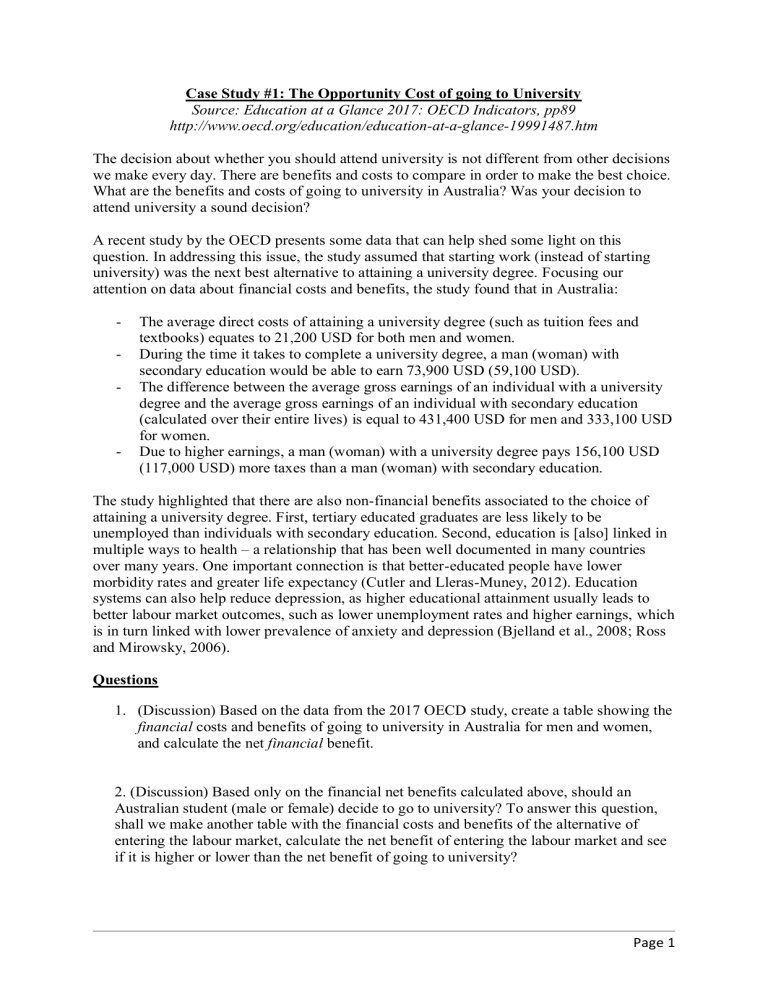
Case Study #1: The Opportunity Cost of going to University Source: Education at a Glance 2017: OECD Indicators, pp89 http://www.oecd.org/education/education-at-a-glance-19991487.htm The decision about whether you should attend university is not different from other decisions we make every day. There are benefits and costs to compare in order to make the best choice. What are the benefits and costs of going to university in Australia? Was your decision to attend university a sound decision? A recent study by the OECD presents some data that can help shed some light on this question. In addressing this issue, the study assumed that starting work (instead of starting university) was the next best alternative to attaining a university degree. Focusing our attention on data about financial costs and benefits, the study found that in Australia: - - The average direct costs of attaining a university degree (such as tuition fees and textbooks) equates to 21,200 USD for both men and women. During the time it takes to complete a university degree, a man (woman) with secondary education would be able to earn 73,900 USD (59,100 USD). The difference between the average gross earnings of an individual with a university degree and the average gross earnings of an individual with secondary education (calculated over their entire lives) is equal to 431,400 USD for men and 333,100 USD for women. Due to higher earnings, a man (woman) with a university degree pays 156,100 USD (117,000 USD) more taxes than a man (woman) with secondary education. The study highlighted that there are also non-financial benefits associated to the choice of attaining a university degree. First, tertiary educated graduates are less likely to be unemployed than individuals with secondary education. Second, education is [also] linked in multiple ways to health – a relationship that has been well documented in many countries over many years. One important connection is that better-educated people have lower morbidity rates and greater life expectancy (Cutler and Lleras-Muney, 2012). Education systems can also help reduce depression, as higher educational attainment usually leads to better labour market outcomes, such as lower unemployment rates and higher earnings, which is in turn linked with lower prevalence of anxiety and depression (Bjelland et al., 2008; Ross and Mirowsky, 2006). Questions 1. (Discussion) Based on the data from the 2017 OECD study, create a table showing the financial costs and benefits of going to university in Australia for men and women, and calculate the net financial benefit. 2. (Discussion) Based only on the financial net benefits calculated above, should an Australian student (male or female) decide to go to university? To answer this question, shall we make another table with the financial costs and benefits of the alternative of entering the labour market, calculate the net benefit of entering the labour market and see if it is higher or lower than the net benefit of going to university? Page 1 Page 2


